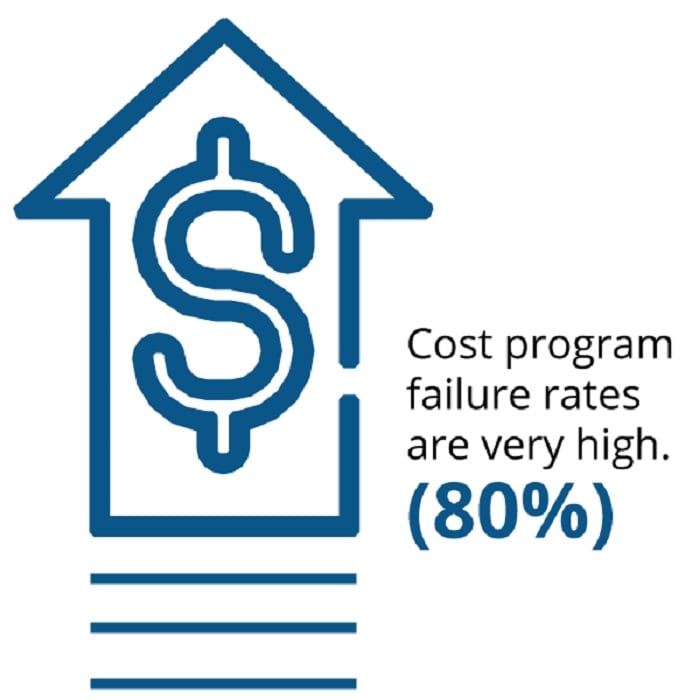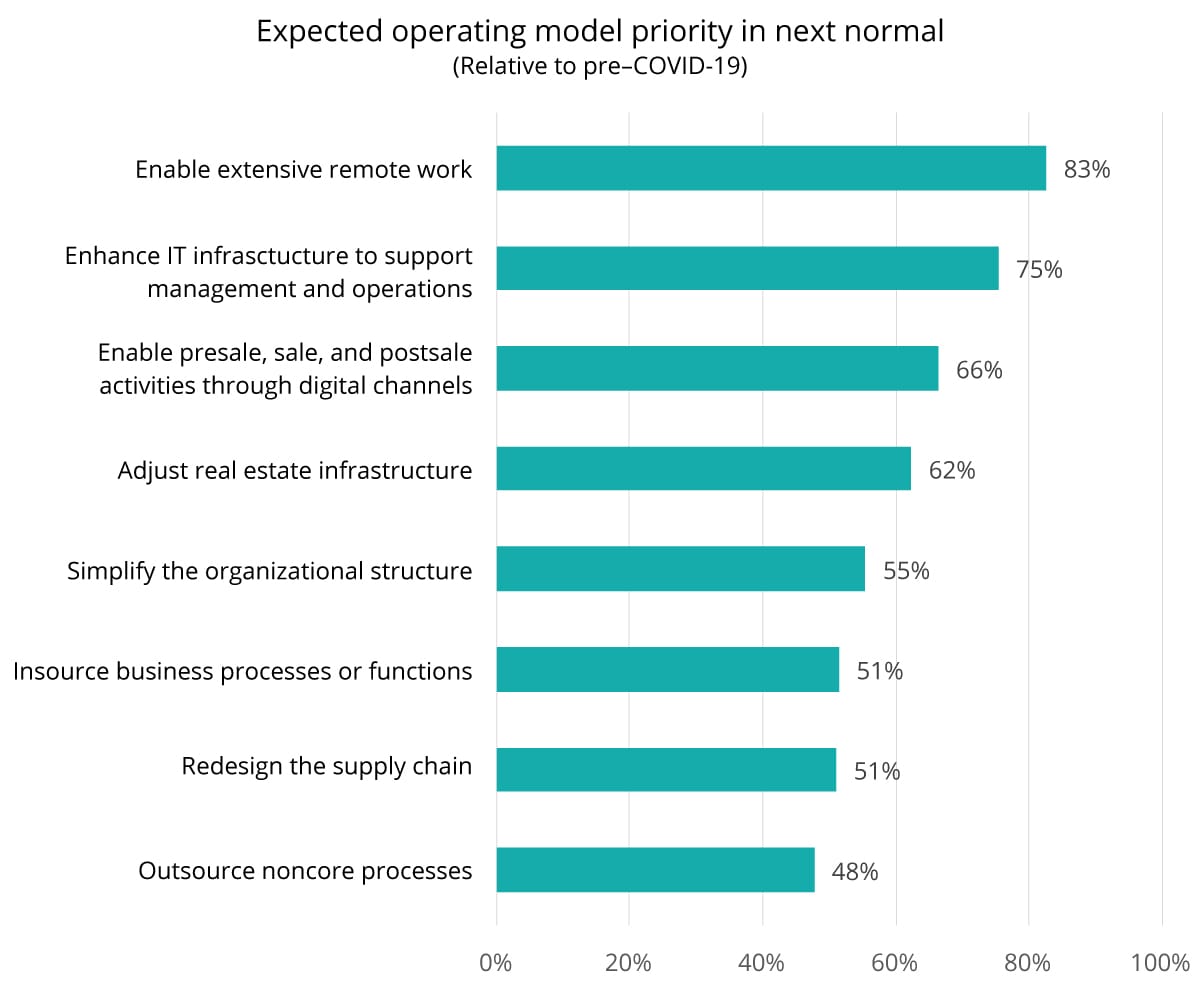The cost transformation imperative in banking and capital markets has been saved

Perspectives
The cost transformation imperative in banking and capital markets
Banking cost structure insights from our 2020 Save to Thrive study
Our 2020 Save to Thrive analysis, the first cost reduction survey conducted by Deloitte amid the pandemic, offers profound insight into the many ways COVID-19 has undeniably reshaped the global business landscape, specifically with regard to banking and capital markets (B&CM). Included in the survey were 100 B&CM executives with direct involvement in their companies’ bank cost structure, management, and transformation efforts, representing a broad range of global geographies—with particularly strong representation from countries that have been highly affected by the pandemic. Here, we analyze their responses and what they may mean for B&CM’s next normal.
Explore content
- Are your strategic priorities shifting?
- Strategic priorities did not all waver
- Shifting priorities meet persistent realities
- Are your external and internal challenges evolving?
- Are your product strategies and operations keeping pace?
- Is your organization moving rapidly to capitalize on this opportunity?
- Get in touch
- Join the conversation
Are your strategic priorities shifting?
As market uncertainty continues amid the ongoing pandemic, the business imperative for B&CM organizations to adopt a “save to thrive” cost transformation model that enables them to drive efficiencies, profitability, and technical advancements—a top priority before the pandemic—has only grown. Financial institutions are more likely to undertake cost reductions than they were prior to the onset of the pandemic, when, at most, only 26% were somewhat likely to undertake cost reduction initiatives and another 25% were somewhat unlikely. Today, by contrast, a full 44% of B&CM respondents are somewhat likely to undertake cost reduction initiatives, with another 22% very likely to, and only 9% in the somewhat unlikely camp.
66% of B&CM respondents are somewhat or very likely to undertake cost reduction initiatives, versus 35% before the pandemic.
With widespread COVID-19 vaccination and herd immunity still several months out, institutions are considering what revenue channels, strategic priorities, and operating models will be most impactful in the next normal. To that end, our 2020 cost transformation study illuminated certain shifts in priorities in the wake of the pandemic.
Strategic priorities did not all waver
While talent management rose to the forefront—no surprise, given the near-instant need to work remotely amid the pandemic—even more intriguing were the strategic priorities that did not significantly waver. One prime example: digital and technology enablement tools, historically one of the first line items to get cut when times get tough. To our surprise, however, they didn’t lose focus in 2020 as in previous down cycles.
In the face of 38% lower positive revenue expectations, the likelihood of undertaking cost reduction initiatives has nearly doubled, with digital enablement and talent management overtaking product profitability and sales growth as two of the top three strategic priorities in 2020.
Click image to enlarge
Key findings from our 2020 cost study only cement COVID-19’s role in evolving the B&CM cost structure transformation model:
- Positive revenue expectations have dropped by 38%.
- Likelihood of undertaking cost reduction initiatives has increased by 31%.
- Cybersecurity focus has increased to 73% and is now the top-rated external risk.
- The top reported internal cost management challenge before COVID-19—information systems that support business processes and decisions—wasn’t even reported in 2020.
- Similarly, the top reported internal cost management challenge post–COVID-19—an inability to rapidly adjust cost structure to meet demand—wasn’t reported at all in 2019.
Shifting priorities meet persistent realities
Cost transformation models are often easier said than done owing to their breadth and complexity. Here are the top three reasons cost transformation programs fail:
- Inability to execute and lack of sustainable funding mechanism (62% experience implementation problems)
- Lack of buy-in and empowerment and focus on incremental low-hanging fruit versus bold mindset (53% report lack of understanding by stakeholders)
- Unclear business cases and moving targets due to multiple in-flight priorities (59% report weak business cases and 56% report infeasible target-setting)
Are your external and internal challenges evolving?
While the pandemic created many new challenges externally and internally, it also caused financial institutions to reprioritize those that existed prior to COVID-19. Respondents reported increases in external challenges related to cybersecurity, supply chain and distribution (56%), and increased regulatory requirements to reopen business activity as their greatest external challenges post–COVID-19.
Click image to enlarge
B&CM respondents reported different internal challenges in 2020 versus 2019, as well. Prior to the pandemic, the top internal challenges were related to finding, training, and retaining talent, as well as the reliability and functionality of information systems. Internal challenges post–COVID-19 have shifted to the ability to rapidly adjust cost structure to meet demand, inability to meet increased demand, and lack of liquidity.
Click image to enlarge
Are your product strategies and operations keeping pace?
As strategic priorities continue evolving, so too are the external and internal operations that support them. Relative to our pre–COVID-19 survey results, B&CM respondents increasingly reported digital channels (63%) and post–COVID-19 products and services (56%) as the most important future revenue channels, with remote work (83%) and IT infrastructure (75%) the top operating model priorities. Product strategies are also shifting, with increasing focus on customizing products/services (70%); engagement strategies are focused on cross-selling (69%) and shifting transactions to digital channels (69%).
Click images to enlarge
Can automation save the day?
As B&CM organizations shift their strategic focus toward cost reduction and growth to scale sales, their post–COVID-19 technology investments will continue to evolve. This shift is most evident in the rise of robotic process automation (RPA), with an almost 10% increase in B&CM respondents post–COVID-19. Focus on virtual reality and remote enablement technology also revealed a sizable shift, increasing by 17 points.
Is your organization moving rapidly to capitalize on this opportunity?
In the long term, financial institutions appear poised to continue the momentum created by the pandemic and the sea changes brought with it. Once reticent to change, B&CM organizations now have an opportunity to leverage the next normal to accelerate, leveraging greater investment in technologies and digital-forward cost transformation that will, in turn, expand capabilities and bring greater productivity and more successful outcomes.
The time to get started is now—before the competition beats you to it.
Download our POV for additional insights on the 2020 enterprise transformation and cost reduction survey.
Get in touch
Deloitte financial services cost transformation leaders
| Malik Dzirlo Managing director Deloitte & Touche LLP +1 703 251 1614 | Jason Marmo Principal Deloitte Tax LLP +1 212 436 6570 | |
| James Baker Principal Deloitte Consulting LLP +1 703 251 3679 | Tom Nicolosi Principal Deloitte & Touche LLP +1 215 405 5564 | Chris Albert Partner Deloitte Tax LLP +1 860 725 3626 |
Contact us to learn more
Explore content
- Are your strategic priorities shifting?
- Strategic priorities did not all waver
- Shifting priorities meet persistent realities
- Are your external and internal challenges evolving?
- Are your product strategies and operations keeping pace?
- Is your organization moving rapidly to capitalize on this opportunity?
- Get in touch
- Join the conversation
Recommendations
Cost management in the banking industry
Strategies for improving cost efficiency









